
Inorganic Materials-Applied Research
Scope & Guideline
Exploring the Depths of Inorganic Applications
Introduction
Aims and Scopes
- Synthesis and Fabrication of Inorganic Materials:
The journal publishes research on various synthesis techniques for inorganic materials, including traditional methods and advanced techniques like additive manufacturing and plasma processing. - Characterization of Material Properties:
A significant focus is placed on the characterization of materials, including their mechanical, thermal, and electrical properties, using techniques such as X-ray diffraction, electron microscopy, and spectroscopy. - Applications in Engineering and Technology:
The research covers a wide range of applications for inorganic materials, including their use in construction, electronics, biomedical devices, and energy systems. - Innovative Coating Technologies:
The journal highlights advancements in coating technologies, exploring how coatings can enhance the performance and longevity of materials in various environments. - Nanostructured and Composite Materials:
Research on nanomaterials and composite systems is a core area, focusing on their unique properties and potential applications in advanced technologies. - Environmental and Biocompatible Materials:
The journal also addresses the development of environmentally friendly and biocompatible materials, particularly in medical applications and environmental remediation.
Trending and Emerging
- Additive Manufacturing and 3D Printing:
There has been a marked increase in research related to additive manufacturing techniques, particularly in how they can be applied to create complex geometries and enhance material properties. - Nanotechnology and Nanomaterials:
The field of nanomaterials is gaining traction, with a focus on their unique properties and applications in electronics, medicine, and environmental solutions. - Biomaterials and Biocompatibility:
A growing interest in biomaterials, particularly for medical applications, reflects an emerging trend towards developing materials that are biocompatible and can be used in healthcare. - Smart and Functional Coatings:
Research on smart coatings that respond to environmental stimuli is trending, highlighting the need for materials that can adapt to changing conditions. - Sustainability and Green Materials:
There is an increasing emphasis on sustainable materials and processes, with research focusing on recycling and the use of eco-friendly components in material synthesis. - Advanced Characterization Techniques:
Emerging themes also include the use of advanced characterization techniques to better understand material behaviors at the nanoscale and in complex environments.
Declining or Waning
- Traditional Bulk Material Studies:
Research focusing solely on traditional bulk materials without consideration for advanced processing or nanostructured forms has decreased, as the field moves towards more innovative and functional materials. - Conventional Manufacturing Techniques:
There is a noticeable decline in publications centered on conventional manufacturing techniques, as newer methods such as additive manufacturing and advanced coating processes take precedence. - Basic Theoretical Studies:
Papers focused purely on theoretical aspects without practical applications or experimental validation are becoming less common, indicating a shift towards more applied research. - Single-Component Material Investigations:
The exploration of single-component inorganic materials is declining in favor of more complex composite materials and multifunctional systems. - Low-Temperature Applications:
Research centered on low-temperature applications is waning, possibly due to the increasing focus on high-temperature and extreme environment applications.
Similar Journals

APPLIED PHYSICS A-MATERIALS SCIENCE & PROCESSING
Fostering Innovation through Rigorous Scientific InquiryApplied Physics A: Materials Science & Processing, published by Springer Heidelberg, is an esteemed academic journal that has been at the forefront of innovative research since its establishment in 1995. With a strong focus on the intersection of physics, materials science, and engineering, this journal explores cutting-edge developments and applications that influence contemporary materials research. Categorized in the Q2 quartile across both Chemistry and Materials Science, it boasts respectable rankings in Scopus, affirming its influence and reach within the academic community. Although primarily a subscription-based journal, it is dedicated to disseminating high-quality research findings that advance our understanding in these fields. Researchers, professionals, and students alike can benefit from the journal's commitment to publishing comprehensive studies, methodological advancements, and insightful reviews that push the boundaries of knowledge in materials science.
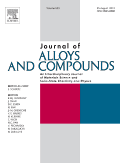
Journal of Alloys and Compounds
Unveiling the Science Behind Complex MaterialsJournal of Alloys and Compounds, published by Elsevier Science SA, stands at the forefront of materials research, focusing on the properties, applications, and innovations within alloys and compounds. With an impressive impact factor and prestigious rankings placing it in the Q1 quartile across multiple related categories—including Materials Chemistry, Mechanical Engineering, and Mechanics of Materials—this journal is recognized for its significant contributions to the field. Researchers and professionals engaged in metallurgy, materials science, and engineering will find it a critical resource that encompasses groundbreaking studies, insightful reviews, and essential findings. The journal has a strong influence, as evidenced by its Scopus rankings—ranking 14th in Metals and Alloys and 28th in Mechanics of Materials, indicating a robust global impact. As it continues to publish cutting-edge research from 1991 to 2024, the Journal of Alloys and Compounds serves as a vital platform for the exchange of knowledge, thereby advancing our understanding of complex materials and fostering innovation in diverse applications.
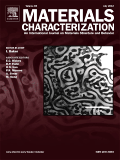
MATERIALS CHARACTERIZATION
Exploring the Depths of Materials EngineeringMATERIALS CHARACTERIZATION is a leading international journal dedicated to the advancement of knowledge in the field of materials science and engineering. Published by Elsevier Science Inc, this esteemed journal has been disseminating vital research since 1970 and continues to be essential for scholars and industry professionals alike. With an impressive impact reflected in its Q1 quartile rankings across several categories—including Condensed Matter Physics, Materials Science, Mechanical Engineering, and Mechanics of Materials—MATERIALS CHARACTERIZATION stands out as a premier outlet for innovative studies and technical advancements. Researchers can access a wealth of peer-reviewed articles that explore properties, characterization techniques, and applications of materials, fostering interdisciplinary collaboration. With a commitment to high-quality research and comprehensive review processes, the journal plays a crucial role in shaping the future of materials science, making it an invaluable resource for anyone invested in this dynamic field.

Inorganic and Nano-Metal Chemistry
Unveiling Breakthroughs in Nano-Metal Applications.Inorganic and Nano-Metal Chemistry is a premier journal published by Taylor & Francis Inc, focusing on innovative research and advancements in the fields of inorganic chemistry and nano-metal applications. With an increasing impact in the academic community, this journal has established itself within the Q3 category of both Inorganic Chemistry and Physical and Theoretical Chemistry as of 2023, reflecting its global recognition and influence. The journal is accessible as an Open Access publication, ensuring that research findings are freely available to a broad audience, promoting transparency and collaboration in scientific exploration. Based in the United Kingdom, Inorganic and Nano-Metal Chemistry aims to disseminate high-quality peer-reviewed articles that not only highlight fundamental studies but also push the boundaries of technological applications in areas such as catalysis, materials science, and nanotechnology. Researchers, professionals, and students will find this journal an invaluable resource for the latest developments and interdisciplinary insights in the ever-evolving landscape of inorganic and nano-metal chemistry.
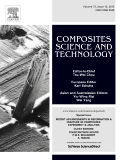
COMPOSITES SCIENCE AND TECHNOLOGY
Innovating Solutions for Tomorrow's Engineering ChallengesComposites Science and Technology, a premier journal published by Elsevier Sci Ltd, serves as a vital resource in the fields of composite materials and engineering. With an impressive 2023 impact factor reflecting its influential contributions, this journal has established itself within the top tier of academic publishing, flaunting a Q1 ranking in both the Ceramics and Composites and Engineering (Miscellaneous) categories. Covering a diverse range of topics from the development of novel composite materials to their practical applications across various industries, it is recognized for its rigorous peer-review process and high-quality research outputs. As reflected in its Scopus rankings, Composites Science and Technology places in the 97th percentile among general engineering journals and the 94th percentile amongst ceramics and composites science literature. Researchers and professionals alike benefit from its comprehensive access to cutting-edge discoveries and advancements, making it an indispensable tool for driving innovation within this dynamic field.
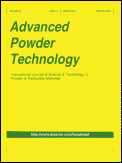
ADVANCED POWDER TECHNOLOGY
Catalyzing Progress in Materials ScienceADVANCED POWDER TECHNOLOGY, published by Elsevier, is a premier academic journal dedicated to advancing the field of powder technology and its applications across various domains, such as chemical engineering and materials science. With an ISSN of 0921-8831 and an E-ISSN of 1568-5527, this journal has established itself as a leader in research dissemination, boasting an impressive Q1 ranking in both Chemical Engineering (miscellaneous) and Mechanics of Materials as of 2023. Further enhancing its reputation, it ranks 42nd out of 398 in the field of Mechanics of Materials and 36th out of 273 in General Chemical Engineering, demonstrating its significant impact within these disciplines. With a publishing history spanning from 1990 to 2024, ADVANCED POWDER TECHNOLOGY offers a wealth of knowledge and research findings, positioning itself as an indispensable resource for researchers, professionals, and students eager to explore cutting-edge advancements and applications of powder systems. Access to its latest research is available through institutional subscriptions, ensuring efficiency and support for ongoing academic endeavors.
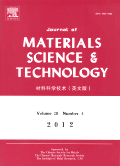
Journal of Materials Science & Technology
Pioneering Insights for Tomorrow's MaterialsThe Journal of Materials Science & Technology, published by JOURNAL MATER SCI TECHNOL in China, is a leading forum for the latest research in the multidisciplinary field of materials science. With the ISSN 1005-0302 and E-ISSN 1941-1162, this esteemed journal boasts an impressive impact factor and has established itself as a vital resource for professionals, researchers, and students alike. Covering a wide range of topics, including ceramics, composites, materials chemistry, mechanical engineering, and polymers, it has achieved a coveted Q1 ranking in multiple categories as of 2023, reflecting its position in the top tier of scholarly publications. Notably, the journal excels in its Scopus ranks, placing within the top 5% in categories such as Metals and Alloys and Mechanical Engineering. Aiming to foster knowledge and innovation in material development and application, the journal is committed to facilitating groundbreaking research and collaborations that propel the field forward. With its convergence of insights from 1993 to 2025, the Journal of Materials Science & Technology remains an indispensable resource for the advancement of materials science.

POLYMERS & POLYMER COMPOSITES
Fostering Collaboration in Material AdvancementsPOLYMERS & POLYMER COMPOSITES, published by SAGE Publications Ltd, is a prestigious journal dedicated to the exploration of significant advancements in the diverse fields of polymers, composite materials, and their innovative applications. With an ISSN of 0967-3911 and E-ISSN of 1478-2391, this journal plays a crucial role in the academic community, boasting an impressive ranking in the Q2 quartile across pivotal categories such as Ceramics and Composites, Materials Chemistry, and Polymers and Plastics in 2023. Positioned in the United Kingdom, it serves as a vital resource for researchers and professionals, providing insights into current trends and future directions in material science. Despite its availability not extending to Open Access, the journal aims to promote rigorous peer-reviewed research, thus fostering knowledge and collaboration among scholars. With publication convergence from 1993 to 2024, POLYMERS & POLYMER COMPOSITES stands as a cornerstone for those pursuing advanced understanding and excellence in material innovation.

Journal of Metals Materials and Minerals
Exploring Innovations in Metals, Materials, and MineralsJournal of Metals Materials and Minerals (ISSN: 0857-6149) is a renowned academic publication dedicated to the interdisciplinary fields of metallurgical science, materials engineering, and mineralogy. Published by Chulalongkorn University, Metallurgy & Materials Science Research Institute in Thailand, this journal serves as a pivotal platform for researchers to disseminate their findings and explore innovative applications related to metals, ceramics, polymers, and biomaterials. Although the journal does not currently adopt an open-access model, it provides insightful content that facilitates knowledge sharing among professionals and academics alike. The journal has established its credibility with impressive Scopus ranking percentiles, particularly in categories such as Metals and Alloys and Ceramics and Composites. With an emphasis on advancing the understanding of materials science from 2017 to 2024, the Journal of Metals Materials and Minerals remains an essential resource for those striving to contribute to and stay informed about the latest trends and breakthroughs in these dynamic fields.

POWDER METALLURGY AND METAL CERAMICS
Pioneering Research in Advanced Material DevelopmentPOWDER METALLURGY AND METAL CERAMICS is a prestigious journal published by Springer, dedicated to advancing the field of powder metallurgy and the development of metal ceramics. With an ISSN of 1068-1302 and an E-ISSN of 1573-9066, this journal includes significant research contributions that explore innovative developments in materials science and engineering. Since its inception in 1993, it has garnered attention within multiple disciplines, consistently ranking in the Q2 and Q3 quartiles across categories such as Metals and Alloys, Ceramics and Composites, and Mechanics of Materials. The journal offers valuable insights into the synthesis, characterization, and applications of advanced materials, making it an essential platform for researchers, professionals, and students aiming to stay at the forefront of technological advancements in this dynamic field. Although not currently offering open access, the journal remains a critical resource for disseminating high-quality research that influences both academia and industry.